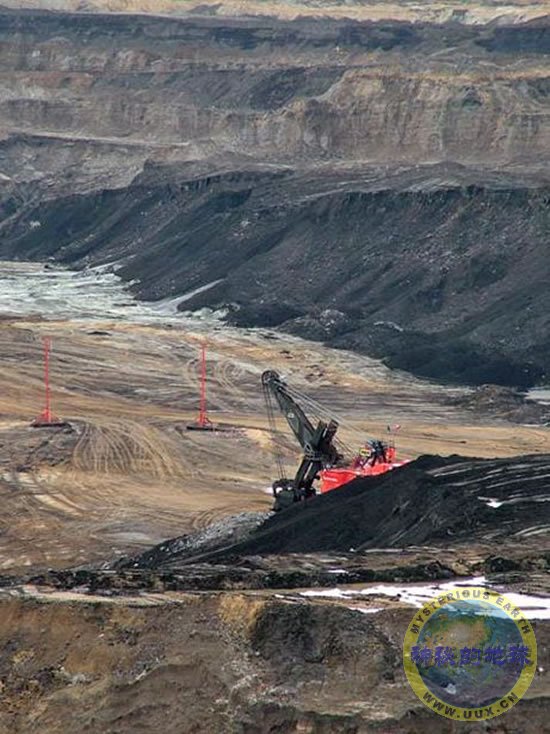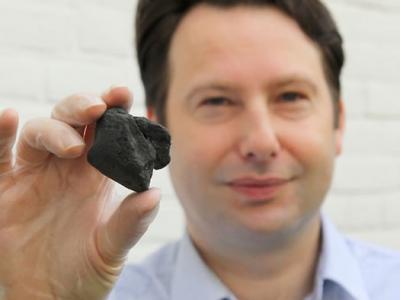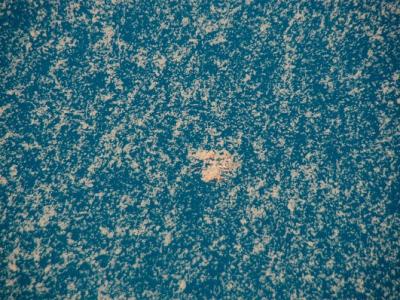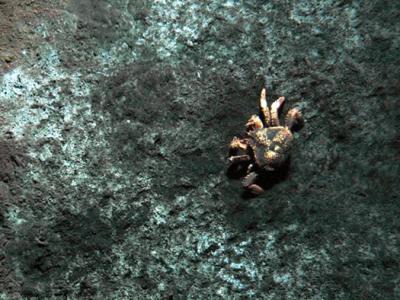Fertilized Microbes Make Natural Gas Fast, Study Says
Tar sand deposits in Alberta, Canada—such as those pictured—could produce methane gas in a matter of years, according to scientists who say the finding may lead to an extraordinary increase in the amount of usable energy known to lie under Earth's surface.
The method involves feeding fertilizer to oil-fermenting microbes.
Photograph by Ian M. Head, Nature
Seth Borenstein in Washington
Associated Press
December 13, 2007
A vast new energy supply could be generated simply by feeding fertilizer to deep-dwelling microbes that create the key ingredient of natural gas as they live off harder-to-tap deposits in older oil fields, new research suggests.
Canadian and English researchers were able to convert heavy oil into usable methane in small glass tubes in a mere two years of lab research—instead of the tens of thousands of years the process can take on its own.
The next step is to do it in real oil fields.
Speeding Up Nature
The new method takes advantage of the natural process that occurs when microbes slowly degrade oil into methane, the chief ingredient in natural gas.
The researchers report their experiment in a study published online Wednesday in the journal Nature.
"You're talking a very substantial amount of energy," said study co-author Steve Larter, a University of Calgary petroleum geologist. "It's potentially a game-changer if it can be demonstrated."
Proving that it could work on a large scale, economically, and in real-world conditions is the big unknown, the researchers concede.
Larter said it was hard to come up with just how much energy they could produce, but he speculated it could be near the equivalent of the world's conventional oil reserves.
"Miracle-Gro"
The key is the microbes, which have existed underground for hundreds of millions of years. They ferment the oil and expel natural gas without requiring oxygen.
Others have tried an approach similar to that used by Larter and his colleagues, seeking to speed up the process by increasing bacteria.
But Larter says the key is giving the microbes their own version of vitamins.
"You'd basically feed them Miracle-Gro or fertilizer to accelerate their growth rate," he said.
The new product would not be oil but natural gas—a cleaner-burning fuel that contributes far less to global warming.
Such an approach would be most promising in places with heavy oil, such as the tar sands of Alberta, Canada, and deposits in Venezuela and the U.S. state of Utah, other experts said.
Right now, once the amount of energy it takes to extract heavy oil has been accounted for, only about 17 percent of the oil can usually be recovered, the Nature article said. There are about six trillion barrels of heavy oil under Earth's surface, the article said.
The concept makes sense and is already being applied to getting methane from coal beds, said U.S. Geological Survey research geochemist Michael Lewan, who was not part of the Larter study team.
Copyright 2007 Associated Press. All rights reserved. This material may not be published, broadcast, rewritten, or redistributed.












